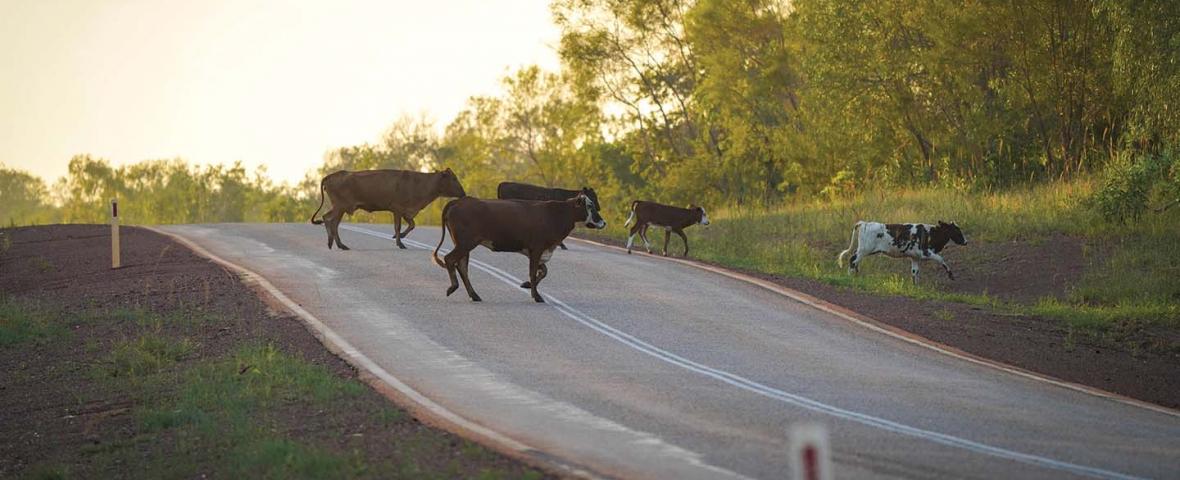Danger of Livestock on Roads

Livestock on our roads in pastoral regions, which span more than 890,000 square kilometres, has been an issue for many years and we are actively working to manage this.
The Pastoral Animal Hazard Advisory Group has undertaken extensive research and analysis to target road safety initiatives. In 2020 and 2021, the group ran an education campaign across the Kimberley, Pilbara, Mid West – Gascoyne and Goldfields–Esperance regions. The message focused on the need for road users to drive carefully in pastoral areas where there is increased risk of straying cattle on the road.
The campaign featured a radio advertisement, billboards, digital advertising, displays in shopping centres and event venues, and an emotive social media presence – all helping to raise awareness of the need to drive with care and slow down at dusk and dawn.
We have seen a 23 per cent reduction in the number of cattle-related crashes in pastoral regions, as well as a drop in the severity of collisions that do occur.
The Pastoral Animal Hazard Advisory Group, formed in 2018, engages key stakeholders to influence improvement in safety outcomes. Membership includes representatives from government and industry bodies.
The group’s research is based on data-led decision-making, to reduce the frequency and severity of livestock-related crashes. It regularly investigates, maps, and shares cattle strike hotspot data.
Other strategies include:
- installing grids on road reserve fence lines
- moving watering points further back from the roadside
- installing one-way cattle gates
- improving warning signs and fencing standards
- assisting with funding for fencing at hotspot areas.
We continue to invest in initiatives related to the issue of straying cattle on the road network. According to police records, between 2015 and 2019, 2.17 per cent of all crashes in pastoral regions involved cattle or sheep. Approximately 83 per cent of cattle strikes occur after dusk, according to analysis undertaken on a section of Great Northern Highway in the Kimberley. Increased numbers of animal-related crashes are experienced in the Kimberley region between June and August and in the Pilbara region between April and July.
Funds are available to continue the program, and additional fencing and other mitigation measures at known hotspots are anticipated. We will continue to work with pastoralists and our State Government and industry partners to educate drivers in an effort to get everyone to their destination safely. For more information visit our website.
